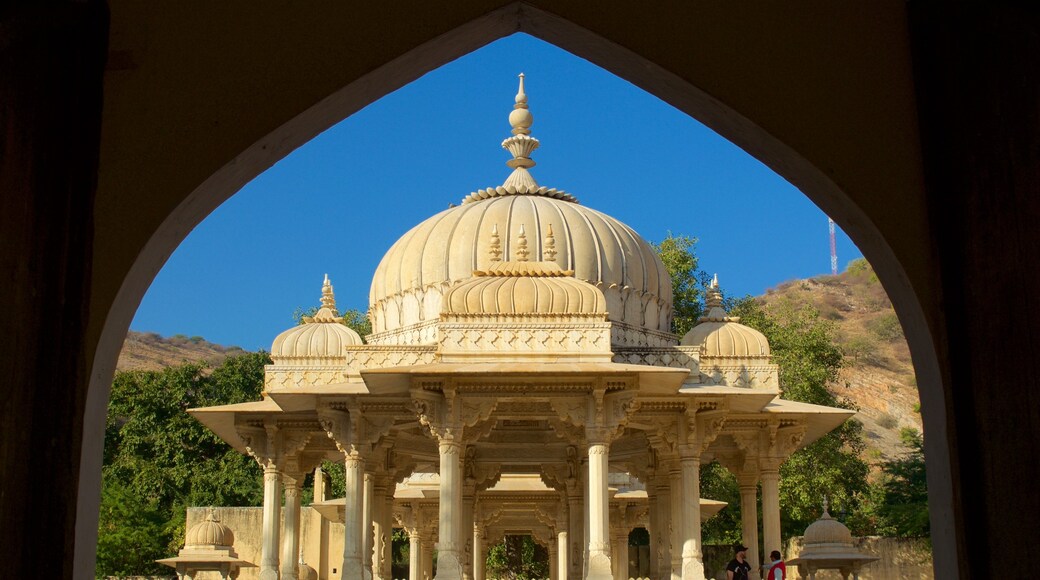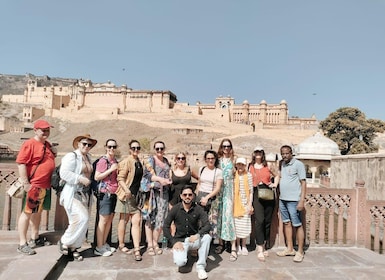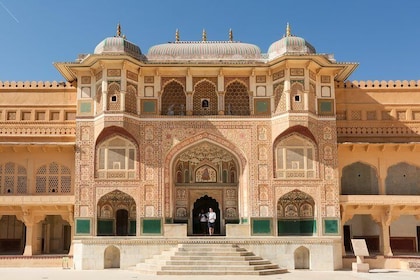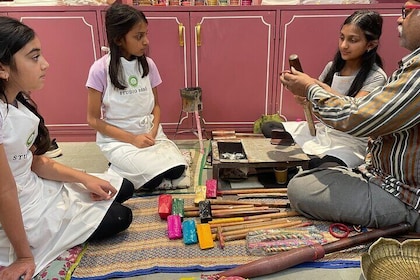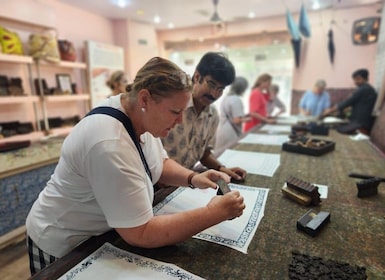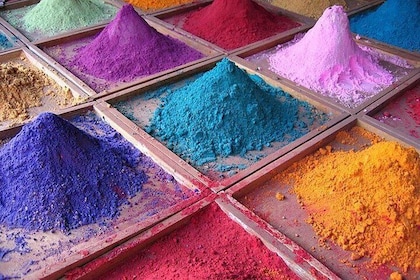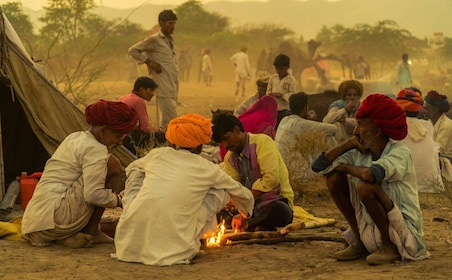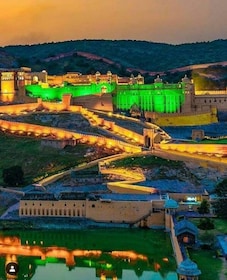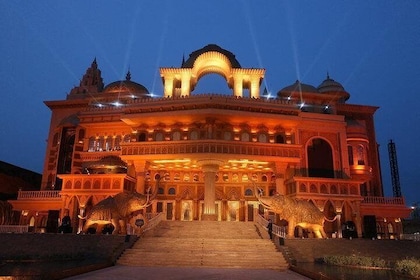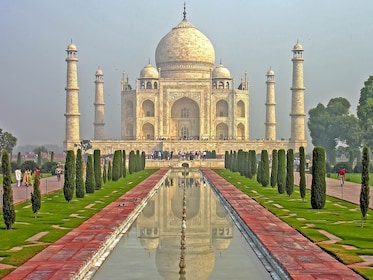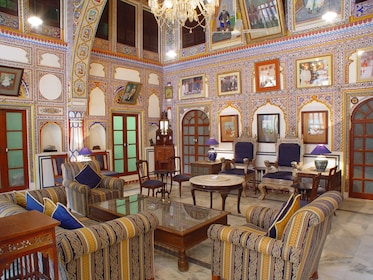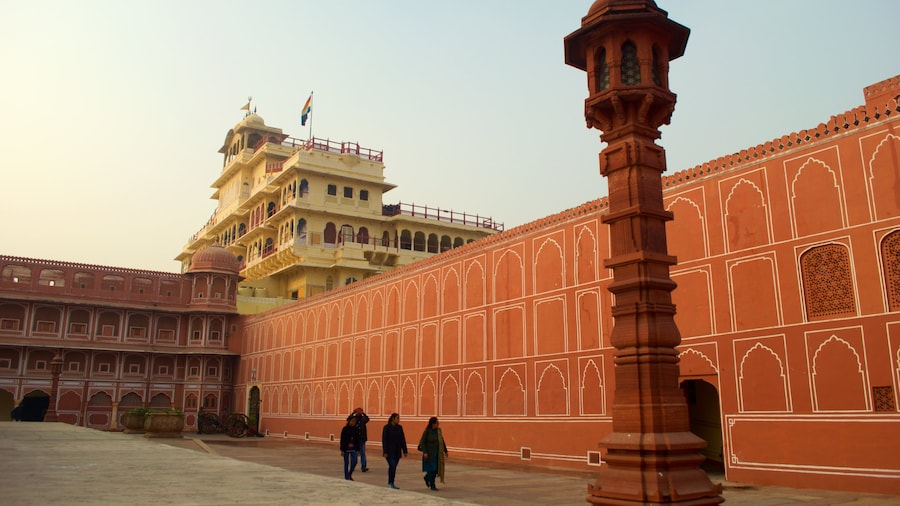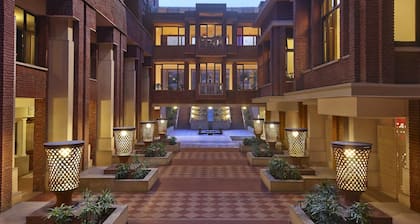Find peace and solitude among the mausoleums, memorials and tombs of the Royal Gaitor, also known as the "Gaitore." This walled funerary complex is the cremation site of some of Jaipur’s greatest rulers and pays tribute to their memories with beautiful carvings and stonework. Enjoy a walk around this scenic location, which is framed by a backdrop of lush mountains and the Jaipur cityscape.
The compound is split into two main courtyards, each one filled with elaborately carved memorials. The first courtyard is dominated by the 20th-century cenotaph of Madho Singh II, who was Maharaja of Jaipur for more than 40 years. He had four wives and more than 50 concubines who gave birth to over 100 children. Study the attractive memorial to the ruler, which sits on a square marble platform. Look over the ornate wall carvings and exterior gazebos.
In the second courtyard area, find the tomb of Jai Singh II, who died in 1743. As the founder of Jaipur, his cenotaph is regarded very dearly by locals. He was also the first ruler to be honored in the Royal Gaitor. Study the depictions of elephant and lion hunting scenes carved on the base of the structure then look inside the large dome to see scenes from Hindu mythology.
Around the gaitor’s larger tombs are several smaller structures which feature beautiful carvings and depictions of Hindu gods. They are memorials to some of Jaipur's other rulers, including Madho Singh I and Prince Jagat Singh, who died in 1997.
For commanding views of the city, climb a steep path to a ridge above the gaitor. At sunset, this vantage point offers an incredible view of the tombs, which reflect the golden light. While you are here, visit the Ganesh Mandir, one of two major temples in Jaipur that pay tribute to Lord Ganesha.
Royal Gaitor is located just outside Jaipur's city walls. Get there by rickshaw along a well-paved road. The site is open daily and has a small admission fee.
